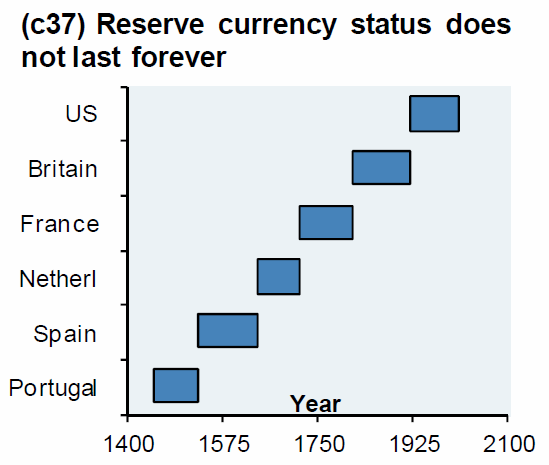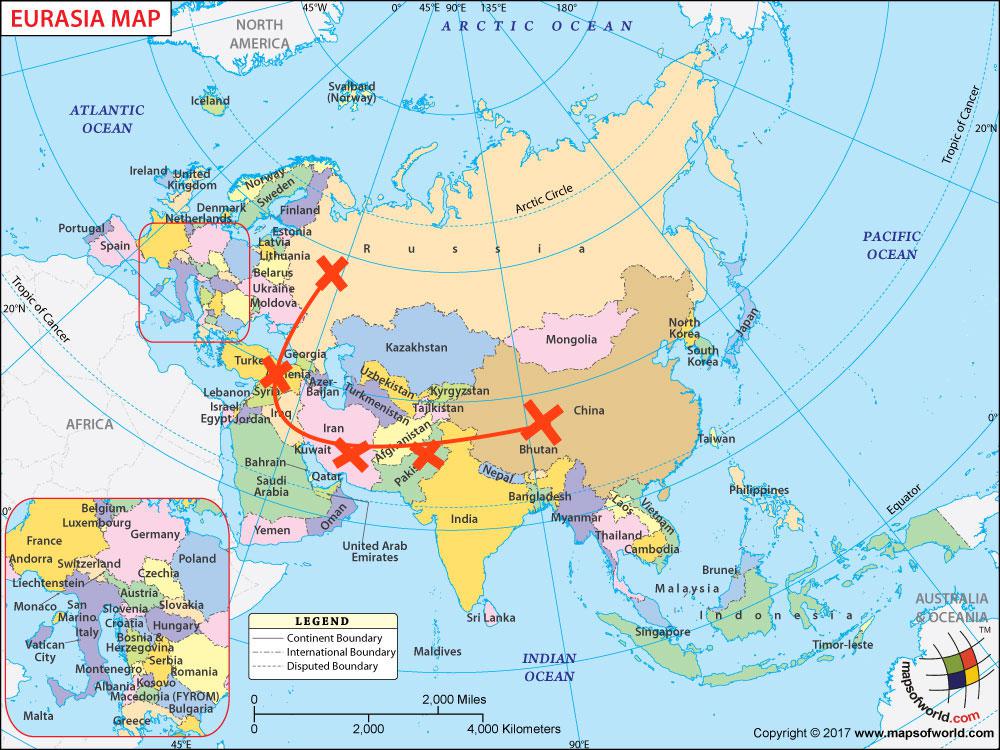The Trend Toward De-dollarization Accelerates
As the U.S. increases its use of the dollar reserve system as a weapon in its trade wars, the rest of the world responds by accelerating its movement away from dollar hegemony.
In January, we laid out the three key themes for gold in 2018. All of them were linked to factors affecting the U.S. dollar. Please take a moment to review that post. Here's a link: https://www.sprottmoney.com/Blog/the-three-major-t...
As noted in that article, the three key drivers for the dollar in 2018 continue to be:
• Political Risk -- Will the Mueller investigation and/or a Democrat takeover of Congress in November lead to investigations, indictments and even impeachment? If so, expect a complete reversal in U.S. confidence and a sharp drop in the dollar index.
• Geopolitical Risk -- For now, the general geopolitical landscape has calmed. However, U.S. tensions with Russia, China, North Korea, Iran and Syria can boil back to the surface on a moment's notice.
• De-dollarization Risk -- Largely due to the increased use of the dollar payment system as a "weapon", talk of de-dollarization grows louder and more prevalent by the day.
For this week, let's focus upon Theme #3: De-dollarization Risk... for that's where the action is at present.
Over the first eight months of the year, the Trump administration has either imposed or sought sanctions and tariffs against a seemingly wide range of countries, the most noteworthy being China, Pakistan, Iran, Turkey and Russia. Viewed separately, it would seem that each sanction or tariff is due to a specific circumstance—i.e. trade deficits with China or nuclear weapons with Iran. However, when we plot the current sanctions regime on a map, a pattern begins to emerge.
Notably, the sanctioned nations are all a part of the "One Belt, One Road" initiative. China, in particular, has spearheaded this project, and they have also recently begun Shanghai-based trading in yuan-denominated gold and crude oil contracts, both of which potentially constitute a direct threat to current, dollar-backed monetary system as well as the "petrodollar recycling scheme" put in place by the U.S. and Saudi Arabia in 1973. Here's a short list of relevant links:
• https://qz.com/983460/obor-an-extremely-simple-gui...
• https://www.reuters.com/article/us-china-oil-futur...
• https://en.wikipedia.org/wiki/Petrodollar_recyclin... & https://www.bloomberg.com/news/features/2016-05-30...
So, is the U.S. now actively using its "exorbitant privilege" within the dollar-based global monetary system to thwart perceived threats to its hegemony? Many mainstream articles are suddenly appearing that support this notion. Here are just a few from earlier this week alone:
• https://www.cnbc.com/2018/08/27/the-anti-dollar-aw...
• http://www.atimes.com/article/putins-wedding-trip-...
• https://www.strategic-culture.org/news/2018/08/23/...
In the end, what does this mean for precious metal investors? Initially, not much. It's very likely that any changes to the existing global monetary system will be gradual and not sudden. However, all investors must realize that no monetary regime continues indefinitely, and the power of reserve currency status is fleeting. See below:

And any significant changes to the current monetary system will be wildly dollar bearish. Why? By definition, a new system would result in a decrease in dollar demand, while at the same time dollar supply continues to increase due to the soaring level of U.S. debt and deficits. The Econ 101 class you took in college taught you that increasing supply while decreasing demand for any good leads to a lower price... and the same would be true here.
As the value of the dollar declines, the dollar price of all commodities will rise and significant price inflation will follow in the United States and elsewhere. Interest rates will rise as investors demand a higher, inflation-adjusted rate of return. Higher interest rates will lead to a contracting economy. A contracting economy will lead to decreasing tax revenues. All of this will lead to even more dollar creation and quantitative easing. And, eventually, the entire debt-based system begins to careen wildly out of control.
Thus, the time to accumulate physical precious metal as financial protection against this eventuality is now. Yes, we've been preaching this sermon at TFMR since 2010, and since 2013 the dollar price of precious metal has steadily declined. But that in no way means that precious metals prices remain depressed or that the dollar-based global monetary system will continue forever.
Instead, the world continues to move toward a more equitable monetary scheme, one that will invariably revert back to some sort of sound money foundation... the same path that all monetary resets over the centuries have taken.
Buy gold. Buy silver. Take physical delivery. And then wait for the changes that are undoubtedly coming.
The views and opinions expressed in this material are those of the author as of the publication date, are subject to change and may not necessarily reflect the opinions of Sprott Money Ltd. Sprott Money does not guarantee the accuracy, completeness, timeliness and reliability of the information or any results from its use. You may copy, link to or quote from the above for your use only, provided that proper attribution to the author and source is given and you do not modify the content. Click Here to read our Article Syndication Policy.


















